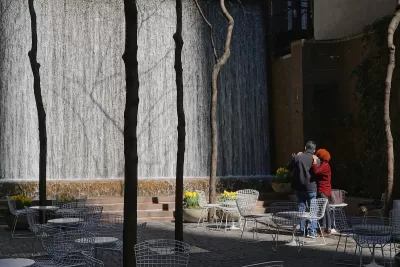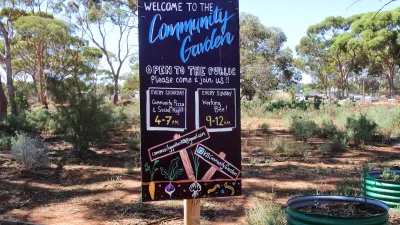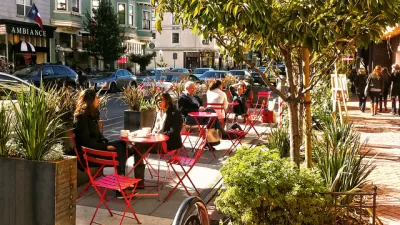Pocket parks aren’t the only way to repurpose underused urban spaces.

When a building roof collapses, whether from age and neglect, a natural disaster, or other causes, buildings and lots often sit vacant and underused for years.
In a piece for Strong Towns, Becky McCray highlights various ways that cities and groups can repurpose roofless buildings.
Most commonly, cities install pocket parks in these locations, but McCray points out that these often go underused. “Try cheap and temporary setups to see what people in your town will actually use. This is important because I’ve seen a lot of pocket parks in small towns, but I’ve very, very, very rarely seen a person actually using one, and I’ve never seen a group or a crowd enjoying a pocket park.”
McCray’s suggestions include adding ample seating and picnic tables to parklets to encourage family and group outings and making the space more inviting with amenities such as public restrooms, games, and art.
For McCray, the key to activating vacant spaces is providing comfort, amenities, activities — or ideally a combination of the above that encourages people to come, stay, and interact.
Vacant lots can bring in revenue, too: “Rent the space to a nearby eatery for outdoor seating during the nice-weather season,” McCray suggests, or offer it for use by farmers’ markets, artisans, and special events.
FULL STORY: 19 Things You Can Do With a Roofless Building or an Empty Lot

Planetizen Federal Action Tracker
A weekly monitor of how Trump’s orders and actions are impacting planners and planning in America.

Map: Where Senate Republicans Want to Sell Your Public Lands
For public land advocates, the Senate Republicans’ proposal to sell millions of acres of public land in the West is “the biggest fight of their careers.”

Restaurant Patios Were a Pandemic Win — Why Were They so Hard to Keep?
Social distancing requirements and changes in travel patterns prompted cities to pilot new uses for street and sidewalk space. Then it got complicated.

Platform Pilsner: Vancouver Transit Agency Releases... a Beer?
TransLink will receive a portion of every sale of the four-pack.

Toronto Weighs Cheaper Transit, Parking Hikes for Major Events
Special event rates would take effect during large festivals, sports games and concerts to ‘discourage driving, manage congestion and free up space for transit.”

Berlin to Consider Car-Free Zone Larger Than Manhattan
The area bound by the 22-mile Ringbahn would still allow 12 uses of a private automobile per year per person, and several other exemptions.
Urban Design for Planners 1: Software Tools
This six-course series explores essential urban design concepts using open source software and equips planners with the tools they need to participate fully in the urban design process.
Planning for Universal Design
Learn the tools for implementing Universal Design in planning regulations.
Heyer Gruel & Associates PA
JM Goldson LLC
Custer County Colorado
City of Camden Redevelopment Agency
City of Astoria
Transportation Research & Education Center (TREC) at Portland State University
Camden Redevelopment Agency
City of Claremont
Municipality of Princeton (NJ)





























